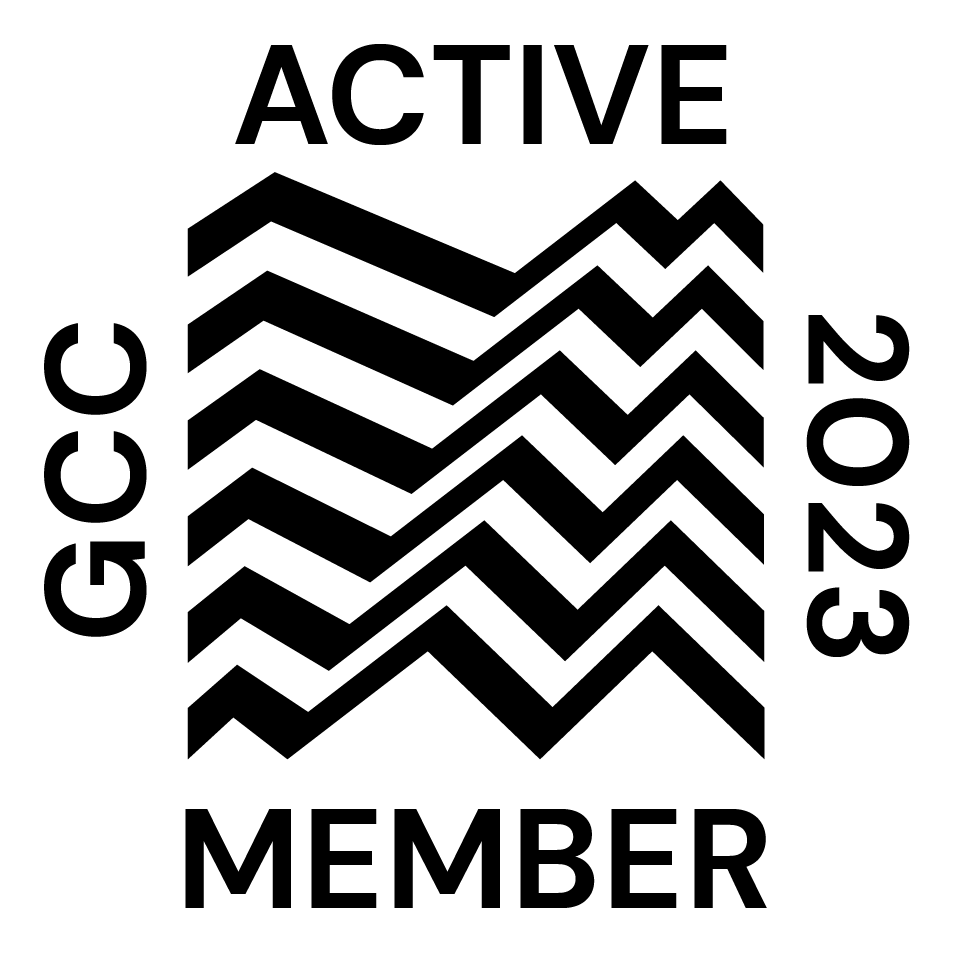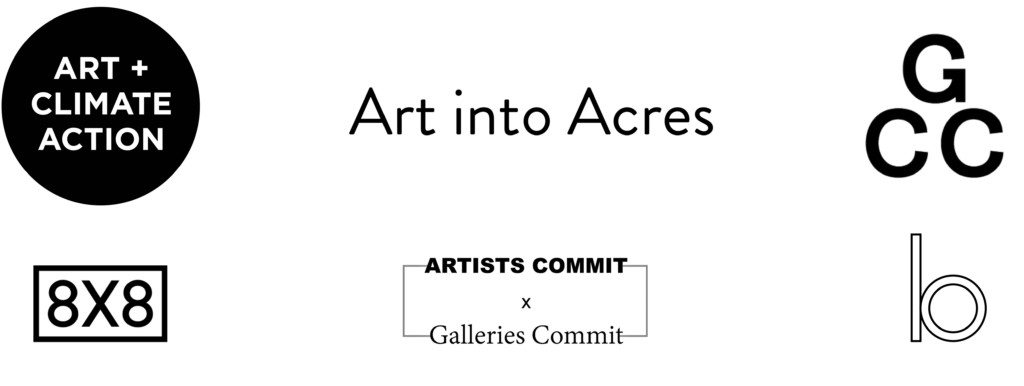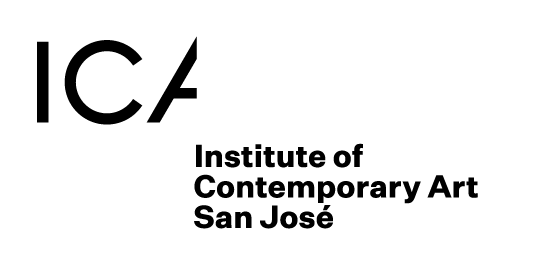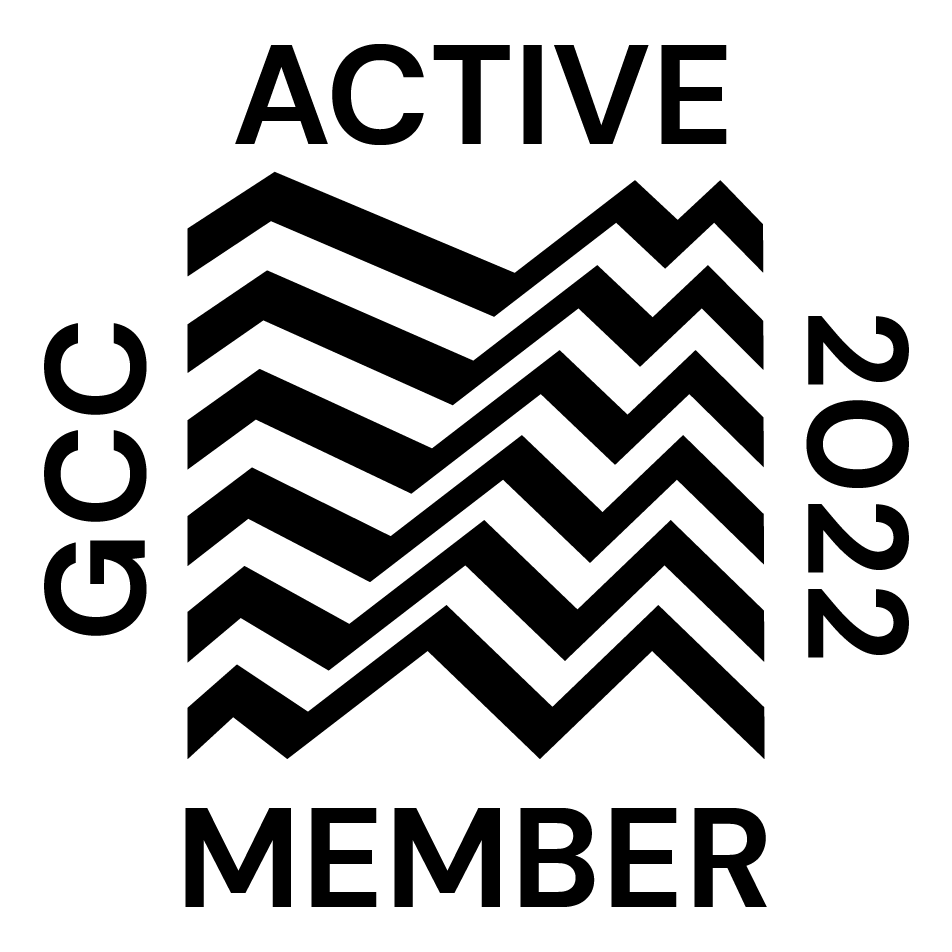Climate Action Statement
Climate change is one of the most pressing global issues of our time and has dire implications for the wellbeing of our environment and communities. In the last 300 years, the world’s average temperature has risen by 1 degree Celsius compared to pre-industrial levels and scientists predict it will continue to rise by another 1.5 degrees Celsius by 2040. This measurable and drastic change in temperature is already disrupting our natural environment, including rising sea levels, loss of biodiversity, and extreme weather patterns such as tornadoes, hurricanes, heatwaves, droughts, and floods. The impacts of climate change also exacerbate social inequity—the effects of global warming will inevitably lead to extensive food and water insecurity, displacement, political instability, competition for increasingly scarce resources, and unequal access to resources—as these impacts will disproportionately affect vulnerable populations, including BIPOC communities, LGBTQ+ folx, unhoused populations, rural communities, agricultural workers, women, children, and the elderly.
While the scientific consensus is clear—post-industrial global warming is caused primarily by human activity—the action required to mitigate climate change on an individual level feels daunting and even unattainable at times within a global system of ever-growing capitalistic consumption. When we consider the breadth and severity of climate change and its implications, collective action is required to effectively address global warming and build a future that is worth looking forward to.
During the summer of 2022, the artist collective, Facing West Shadows, exhibited a cinematic, immersive installation at the ICA San José that delved into the growing concerns related to climate change—The Endless End “illuminates the perpetuation of extinction and survival; the disrupted life cycles of native plants and animals, aquatic systems, and fire ecologies as affected by anthropogenic climate change”.
Inspired by our work with Facing West Shadows, the ICA San José has partnered with Art into Acres to measure our environmental impact in our first emissions report for The Endless End exhibition. Additionally, we are working with Art + Climate Action (A+CA), a collective of California Arts Professionals responding to the climate crisis and working to lower emissions made in the art industry by 50% by 2030. We have committed to Climate Action 8 x 8, an art sector-wide campaign, and have created a plan to lower our carbon footprint. With this in mind, we decided to track our emissions over the whole year of 2022 using the Gallery Climate Coalition (GCC) Carbon Calculator. We will continue to track our emissions and follow our 8-step plan to lower emissions year-by-year, inviting other institutions and organizations to participate in collective action to mitigate climate change.
Our Climate Action 8 x 8 Plan, inaugural Facing West Shadows Emissions Report, and yearly emission calculations can be viewed below in more detail.
Climate Action 8 x 8 Plan
- Measure
- In our baseline year of 2022, ICA San José produced 14.2 tons of CO2 as follows:
- Travel (flights) makes up 0% of emissions at 0 (tCO2e)
- Shipping makes up 1.48% of emissions at 0.21 (tCO2e)
- Energy makes up 83.24% of emissions at 11.82 (tCO2e)
- Travel (other) makes up 1.84% of emissions at 0.25 (tCO2e)
- Packaging & Printing makes up 14.21% of emissions at 1.93 (tCO2e)
- We will continue to track our emissions with the goal of reducing by 50% by 2030
- Energy
- Implement as many of Art + Climate Action’s quick tips for energy savings as possible, including, but not limited to:
- Keep lights off when administration staff are in the building, but the museum is not open (Monday-Wednesday)
- After private tours (Monday-Wednesday), turn off lights and all exhibition media
- Reuse computers and digital resources in our inventory before buying new ones
- Use surge protectors to cut down on vampire usage
- Motion sensor lighting
- Implement a company-wide automatic email delete after 1 year
- Use cloud-based Google Drive for all digital storage
- Opt for a “green” search engine such as Ecosia
- Replace all equipment and appliances with fully electric, Energy Star-certified options at the system’s end of life.
- Keep lights off when administration staff are in the building, but the museum is not open (Monday-Wednesday)
- Shipping
- Ask all shipping companies to participate in Gallery Climate Coalition’s Shipper Sustainable Services Survey and/or provide emissions information on quotes
- Prioritize doing business with shipping companies that provide such information
- Include shipping emissions on invoices
- Continue to prioritize the exhibition of local artists to reduce shipping distances and emissions
- Prioritize shipping by freight truck or ship and avoid air freight as much as possible.
- Travel
- Reduce flights by staff as much as possible
- We have one yearly members trip that began again in January of 2023
- The impact of this yearly flight will be reflected in our 2023 Emissions Report and will emphasize the importance of reducing flights as much as possible
- We have one yearly members trip that began again in January of 2023
- Encourage staff to work from home when possible
- Integrate virtual and in-person meetings to reduce travel for weekly meetings
- Utilize Zoom and Google Meet
- Encourage virtual interaction and discourage out-of-state artists from traveling for installations or exhibition receptions
- Make our exhibitions more accessible online
- Waste
- Reuse crates and packaging materials, minimize new packaging and tape purchases
- Prioritize local businesses when purchasing materials for shipping and installation
- Work with local art organizations to share pedestals, equipment, and other installation materials whenever possible
- Collaborate with other institutions in San José and San Francisco to reuse and repurpose installation materials
- Utilize Barder.art to source and offload resources:
- SOURCE materials we need from the pool of posted items.
- POST unused items we would like to sell, trade, lend, or give away.
- Continue to separate garbage, recycling, and compostable waste
- Continue to recycle non-standard recyclable materials at local businesses:
- GreenMouse, Inc.: E-waste—keyboards, calculators, extension cords, HDMI cords, ethernet cables, RCA cords, power cords, broken computers/monitors, remote controllers, powerstrips, etc.
- Interstate Batteries: Dead light bulbs (fluorescent, LED, incandescent, halogen) and all dead batteries
- U-RECYCLE: non-aluminium metal, dead tracklight cans, magnets
- Target: plastic film/bags
- Support Workers
- Continue to publish the ICA’s emissions data and our actions taken to reduce emissions on our website and social media
- Credit & reward staff who propose and implement actions to reduce emissions
- Continue to promote and share climate-related research/ideas in weekly staff meetings
- Encourage team members to participate in climate-focused training available through PACT initiatives or other organizations
- Continuous Greenhouse Gas Emission Reduction
- Transitioning to a Zero Waste Sector
- Unifying Visions and Shared Knowledge for Climate Action
- Centering Intersectional Environmentalism
- Climate Justice
- Continue to organize exhibitions and prioritize artists that deal directly with climate justice issues and racial/economic inequality
- Amir Fallah
- Ebony G. Patterson
- Facing West Shadows
- Mildred Howard
- Adrian Burrell
- Rhonda Holberton
- Lordy Rodriguez
- and many more…
- Continue to implement public programming referencing climate justice and inequality as a means of educating the public on these issues and informing them of actions they can take to enact change
- Personally and institutionally, continue to make Strategic Climate Fund contributions to Art into Acres.
- Collective Action
- Encourage 5 other galleries and/or museums to participate in Climate Action 8×8.
- Advocate for including arts spaces in San José’s broader sustainability efforts with plans to serve as an institutional model to be implemented across the city of San José.
Annual Carbon Reports and Exhibition Carbon Emissions
Facing West Shadows: The Endless End—Exhibition Carbon Emissions Report
Exhibition Dates: April 1 – August 21, 2022
2022 Carbon Emissions Calculation—Gallery Climate Coalition
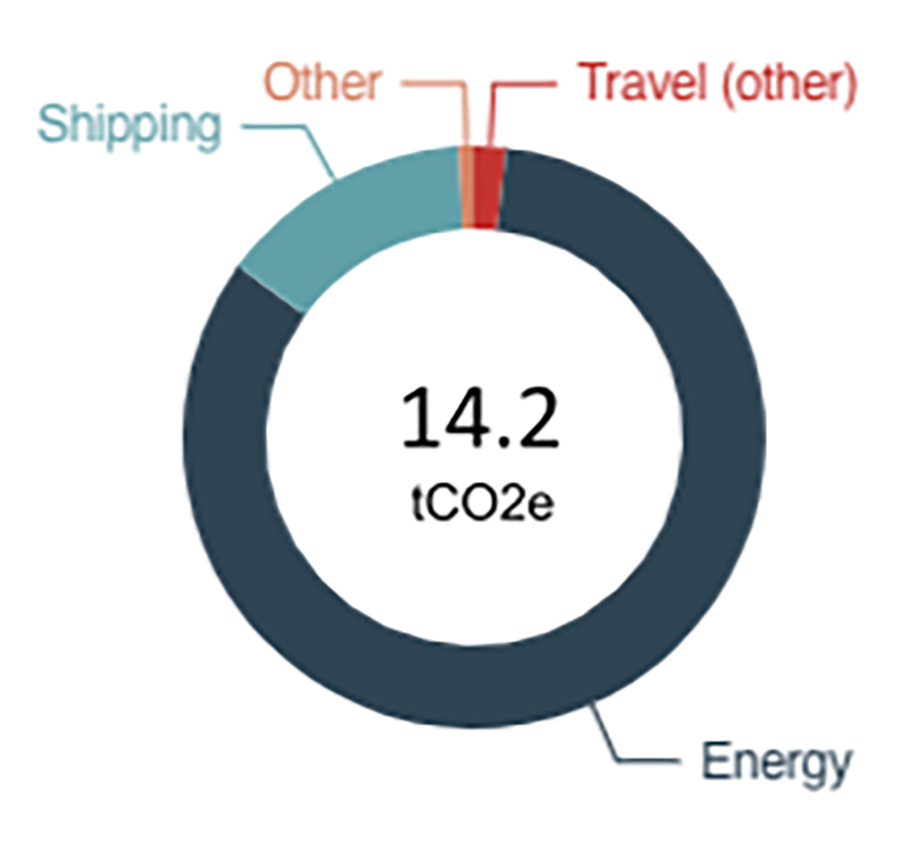
- In our baseline year of 2022, ICA San José produced 14.2 tons of CO2 as follows:
- Travel (flights) makes up 0% of emissions at 0 (tCO2e)
- Shipping makes up 1.48% of emissions at 0.21 (tCO2e)
- Energy makes up 83.24% of emissions at 11.82 (tCO2e)
- Travel (other) makes up 1.84% of emissions at 0.25 (tCO2e)
- Packaging & Printing makes up 14.21% of emissions at 1.93 (tCO2e)
- We will continue to track our emissions with the goal of reducing by 50% by 2030
2023 Carbon Emissions Calculation—Gallery Climate Coalition
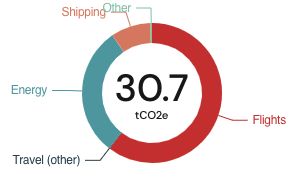
- In the year of 2023, ICA San José produced 30.67 tons of CO2 as follows:
- Travel (flights) makes up 60.38% of emissions at 18.52 (tCO2e)
- Shipping makes up 0.16% of emissions at 0.05 (tCO2e)
- Energy makes up 29.9% of emissions at 9.17 (tCO2e)
- Travel (other) makes up 0.13% of emissions at 0.04 (tCO2e)
- Other (including packaging & printing) makes up 9.42% of emissions at 2.89 (tCO2e)
We made great progress in reducing our energy, travel, and shipping emissions from the baseline year of 2022—our energy emissions reduced by 2.65 tons of CO2, our travel emissions reduced by 0.21 tons of CO2, and our shipping emissions reduced by 0.16 tons of CO2.
Despite reducing our emissions in three areas of output by a total of 3.02 tons of CO2, our overall carbon emissions increased this year due to two flights in January and December. We usually have one trip per year that requires flying, but due to scheduling, our flights both took place during 2023. We decided to be transparent with our data to illustrate the drastic, negative impact of flight emissions on our environment. The emissions of those two flights were more than double our energy emissions for the whole year and are larger than all other emissions data combined.
Engaging with the art world outside of our direct community requires us to fly at least once a year—with this in mind, there are some actions we can take to mitigate the climate impact when flying:
- We made a contribution to Art into Acres in response to the emissions generated from our flights and will contribute for any future flights:
- LA Trip—January 2023
- Total distance: 6,649 miles
- Carbon emissions: 1.48 (tCO2e)
- Donation total: $148
- Donation per person: $13.50~$14
- Miami Trip—December 2023
- Total distance: 76,653 miles
- Carbon emissions: 17.04 (tCO2e)
- Donation total: $1,702
- Donation per person: $113.46~$114
- Both trips
- Total distance: 83,301 miles
- Carbon emissions: 18.52 (tCO2e)
- Donation total: $1,850
- Donation per person: $128
- LA Trip—January 2023
- Choosing direct flights (when possible)
- Choosing to fly in economy seat(s) (lower carbon footprint per passenger)
- Supporting airlines that invest in increasing the fuel-efficiency of their aircrafts and are actively working towards more sustainable aviation practices. For more information about flying sustainably, please visit the following links:
- The Biggest U.S. Airlines, Ranked by Sustainability (2023)
- 4 Sustainable Aviation Fuel Companies Leading the Way to Net-Zero Flying
- A Sudden Rush to Make Sustainable Aviation Fuel Mainstream
- The Aviation Industry Is Investing In Sustainable Fuel, But More Is Needed
- Virgin Atlantic flies world’s first 100% Sustainable Aviation Fuel flight from London Heathrow to New York JFK
- The world’s most eco-conscious airlines
2024 Carbon Emissions Calculation—Gallery Climate Coalition
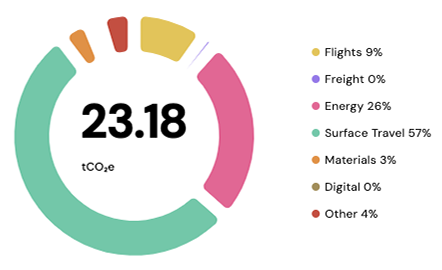
- In the year of 2024, ICA San José produced 23.18 tons of CO2 as follows:
- Travel (flights) makes up 9% of emissions at 2.14 (tCO2e)
- Shipping makes up 0.7% of emissions at 0.11 (tCO2e)
- Energy makes up 26% of emissions at 6.05 (tCO2e)
- *Surface Travel* makes up 57% of emissions at 13.31 (tCO2e)
- Materials makes up 3% of emissions at 0.69 (tCO2e)
- *Digital* makes up 0.3% of emissions at 0.04 (tCO2e)
- *Accommodation* makes up 4% of emissions at 0.84 (tCO2e)
- *New data set*
Over the course of 2024, we reduced our overall emissions by 7.49 tons of CO2 compared to 2023. Our energy emissions were reduced by 3.12 tons of CO2, our flight travel emissions were reduced by 16.38 tons of CO2, and our packaging/printing materials reduced by 2.2 tons of CO2. The most impactful changes we implemented to reduce our emissions include but are not limited to: only turning on lights and electrical equipment when necessary, switching to energy efficient outlets, updating our outdated PA system (replacing outdated equipment with more efficient models), stopping our use of printed paper gallery guides, and reducing our number of plane trips to once per year.
The updated GCC Carbon Calculator allows us to be more accurate in calculating and reporting our emissions, introducing new data sets and more detailed metrics to existing sections. The most notable change in our reporting can be found in our surface travel data—for the first time since we began tracking our emissions in 2022, we were able to collect and calculate the carbon emitted from staff travel to and from the ICA over the course of 2024 (please refer to data in above PDF for details).
To calculate the volume of fuel consumed during commutes, we collected the distance travelled over a round-trip, the average number of trips each week, the fuel type (gas, diesel, hybrid, or electric), make/model, and average MPG. Below is an example of how we calculated fuel volume:
- Miles from ICA:
- 5.7 miles per trip x 2 = 11.4 miles round trip
- # of trips:
- 4.5 times/week
- 11.4miles x 4.5 times/week = 51.3 miles/week
- 4.5 times/week
- Vehicle size/type:
- 2022 Toyota Tacoma Truck
- Fuel Type:
- Gas
- MPG
- 20 MPG city/ 23 MPG highway = 21.5 MPG average
- 51.3 miles/week ÷ 21.5 miles/gallon = 2.386 gallons/week x 48 weeks/year
- = 114.53 gallons/year
Using the volume of fuel consumed, the GCC calculator provided the carbon emitted by each staff vehicle over the whole year. Surface Travel is now our biggest emitter once we accounted for all staff travel to and from the ICA—we will continue to incentivize public transit and working from home to lower our commuting emissions.
